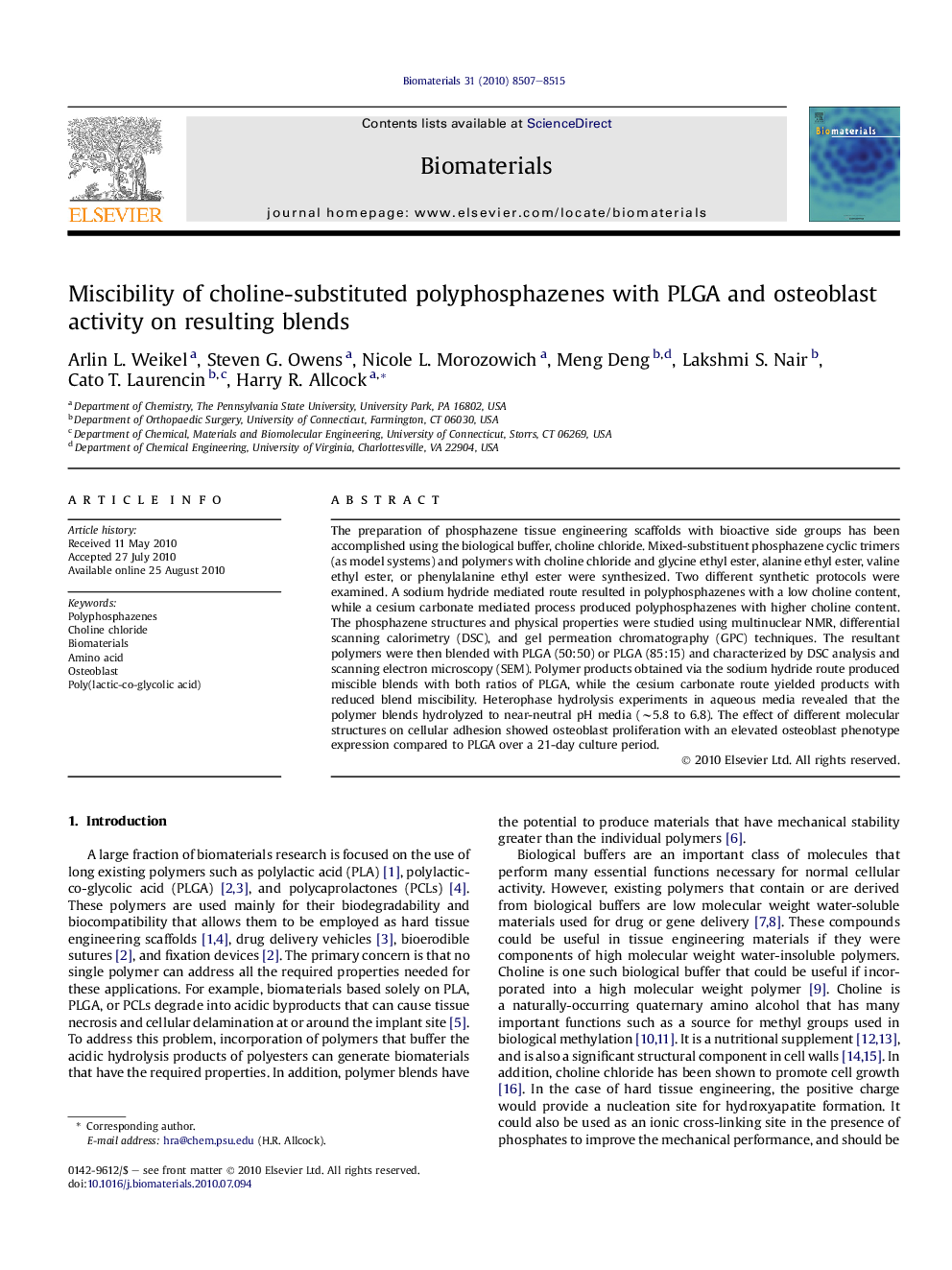| Article ID | Journal | Published Year | Pages | File Type |
|---|---|---|---|---|
| 8834 | Biomaterials | 2010 | 9 Pages |
The preparation of phosphazene tissue engineering scaffolds with bioactive side groups has been accomplished using the biological buffer, choline chloride. Mixed-substituent phosphazene cyclic trimers (as model systems) and polymers with choline chloride and glycine ethyl ester, alanine ethyl ester, valine ethyl ester, or phenylalanine ethyl ester were synthesized. Two different synthetic protocols were examined. A sodium hydride mediated route resulted in polyphosphazenes with a low choline content, while a cesium carbonate mediated process produced polyphosphazenes with higher choline content. The phosphazene structures and physical properties were studied using multinuclear NMR, differential scanning calorimetry (DSC), and gel permeation chromatography (GPC) techniques. The resultant polymers were then blended with PLGA (50:50) or PLGA (85:15) and characterized by DSC analysis and scanning electron microscopy (SEM). Polymer products obtained via the sodium hydride route produced miscible blends with both ratios of PLGA, while the cesium carbonate route yielded products with reduced blend miscibility. Heterophase hydrolysis experiments in aqueous media revealed that the polymer blends hydrolyzed to near-neutral pH media (∼5.8 to 6.8). The effect of different molecular structures on cellular adhesion showed osteoblast proliferation with an elevated osteoblast phenotype expression compared to PLGA over a 21-day culture period.
